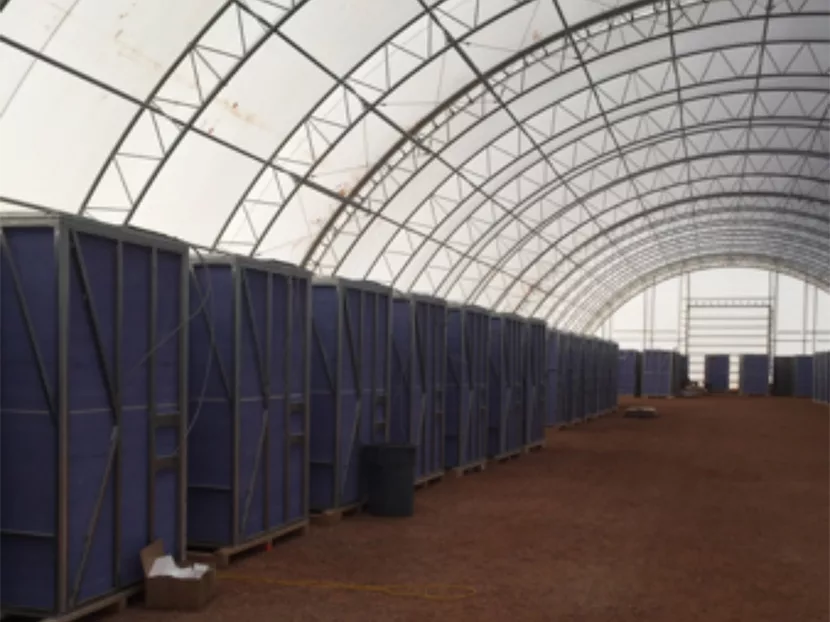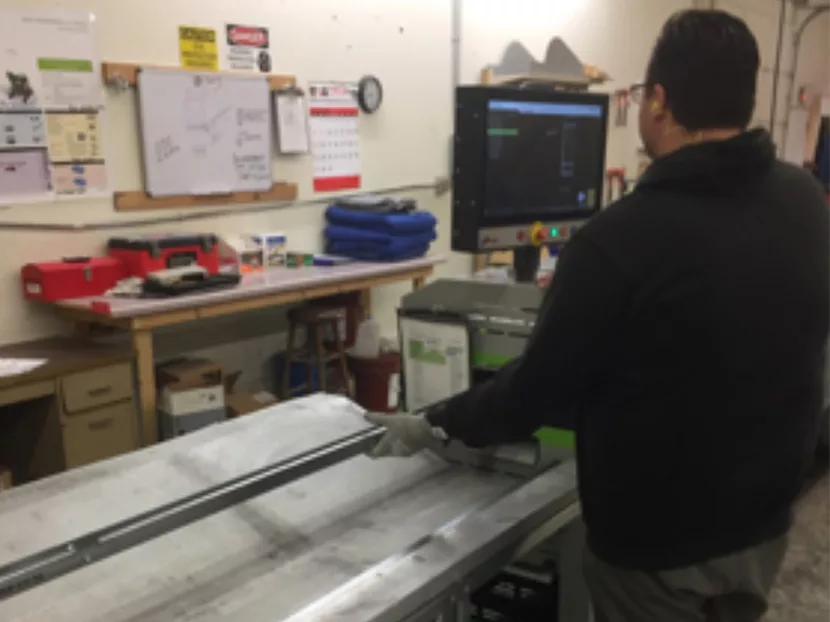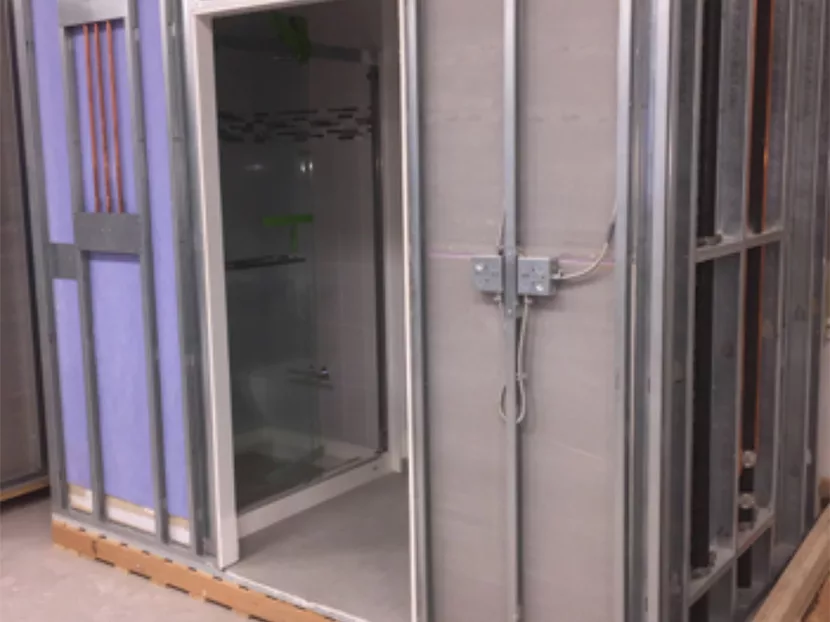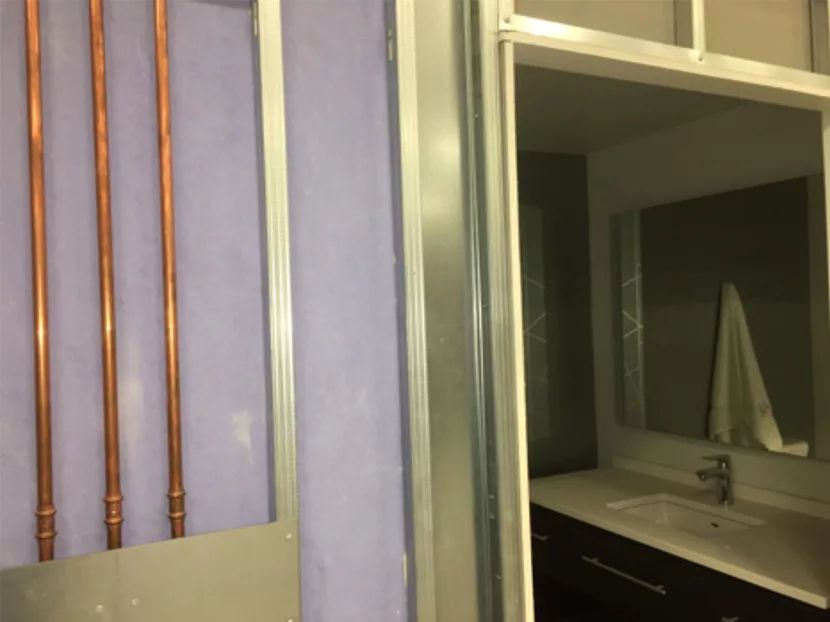In expectation of the arrival of my first child, I purchased a crib from my local big box store and thought to myself, “I’m an engineer, I can put this together with absolutely no problems.” Remember your dad throwing those instructions away as if he was the one who designed the piece of furniture? Perhaps they make furniture more complicated today than they did back then, but as I flipped past the 15th page (middle of the instruction book) I wondered to myself what our building’s instruction book looks like from start to finish. Probably something like this:
- Step 1: Clear site
- Step 2: Dig hole
- Step 19,364,291: Hand over keys to the client.
In a recent trip to Rapid City, South Dakota with Mortenson Construction, I had the opportunity to tour B&T Mfg., a company that manufactures prefabricated bathroom pods. The business revolves around creating custom bathrooms to be shipped on flatbed trucks to project sites all over the country. The concept was simple: Design the bathrooms however you want, and if it is repeatable and fits on a flatbed semi-trailer, B&T can create a modular cost-effective construction alternative with the ability to save your project time and money.
As building engineers, why do we care about prefabricated bathrooms? Why would we spend our design fee thinking about a contractor’s means and methods? Our job is to design the buildings, and the contractor’s job is to build them. Typically, the first time we see the completed bathrooms, it might not be until a couple of days before the clients take occupancy. At that point, you can only pray that there isn’t some major issue to be found.
The reason we care is that these facilities are being built at an incredibly rapid rate, and it’s starting to affect how we design our buildings and systems. Critical design decisions need to be made much earlier in the process. Contractors are constantly looking for ways to be faster and more efficient, and we’ve got to learn how to keep up. In some ways, you’ve got to admire the free market capitalist approach of the construction world. This is an innovative construction method that is primarily prevalent in private sector projects. Being able to contribute to these new ideas will begin to set you apart from your competitors.
There are a number of questions you will need to begin asking early on in the project, such as:
- Can the waste main be laid out down a structural bay so that sanitary installation can be made more modular?
- Can the bathroom design be finalized prior to completion of DDs so the bathroom pods can be ordered and completed in advance of the first floor pour?
- Can the design team create a single coordinated Revit assembly for the bathroom so it can be simply duplicated within the model?
Questions like these are likely to become more common as contractors push for more components of the building to be manufactured off site.
This idea of prefabricating building components in an off-site controlled environment is not new outside the U.S. Although it’s pretty new in America, it’s gaining traction. To help us better understand the process, we asked the manufacturer the following questions, and here were some of the answers:
What are the parameters for the manufacturing of the PODs? It needs to fit on a flatbed truck and have a level economy for production.
What are some specifics of what they would need from us to get a quote? The same specs and drawings that you would normally produce for a project.
How are they shipped, and how do you pick them and set them? It’s a wrapped system that has required some trial and error, but they’ve figured out some of the logistics.
Are they fully fit out and have a floor? Yes, they can also leave the floor unfinished.
Are there different levels of finish? Yes, they will install per your spec.
Are there certain finishes that transport better than others? B&T believes that tub/shower inserts and rolled flooring would be better than tile, but they have yet to have those specified.
How are they inspected? What would we need to do from a Department of Health DHS or local inspection standpoint? They are open to having the local AHJ come and review the work. On the line that was in progress, while we were there, they had the AHJ from California fly in and inspect.
Is a full water test typically done once installed to ensure proper drainage? Yes.
Are the shower, faucet and toilet hooked up during the mock-up to test? Yes, we pressure test the domestic water supply lines.
How early in the process do the design decisions need to be finalized? This is a function of when you need the pods on site and delivered.
How dimensionally accurate are prefabricated pods (i.e. for ADA compliant toilets?). Very accurate. The tolerances are tighter than onsite.
What are the union/non-union constraints? This idea was welcomed by the local contractor on the current hotel project as it took away a lot of their “problem” scope. Having that scope fall on someone else didn’t bother this particular contractor.
To manufacture the modular wall assemblies, B&T uses a machine called FrameCAD. On our visit, we were lucky enough to get a demonstration where the operator took a thumb drive with a CAD file of a wall assembly. The wall assembly was approximatley 8 feet x 12 feet; and the wall studs pieces that were sent out were rolled and fabricated in seconds with the correct milled holes for assembly done per the drawings and ready for assembly. It was immediately evident how quickly and accurately the modules were being produced. A very powerful tool for a contractor who is trying to control project schedule.
During the last contractor interview, the team explained that they were not constructing these buildings anymore. They are manufacturing them, which is pretty cool. If you think about it from the client’s perspective, this construction method could have enourmous value. Any time you can control parameters through manufacturing and make things more predictable, you decrease the potential fordeviation errors and failures.
Parameters? Modularization? Assemblies? Deviation errors? I’m starting to sound like an industrial engineer. The application of these pods are not going to be for every project, but the engineering community is going to have to begin to pay attention to how it will affect the design and delivery methods of projects.
Thanks again to the truly innovative team at B&T Mfg. company for the educational tour. Reflecting back on assembling my son’s crib, I realize that my process was less of a production line and more of a scene from my now five-year old’s art class. Perhaps these box stores could take a page from B&T, and begin prefabricating furniture to arrive at your house pre-assembled, saving everyone the time and headache of the traditional method.








